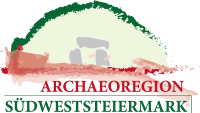The Archaeology Museum of the Joanneum Universal Museum displays more than 1,200 objects which, as “traces of life”, form starting points for questions which have been moving people for thousands of years.
Highlights of the permanent exhibition are its world-class Hallstatt-period objects such as the cult chariot from Strettweg or the mask from Kleinklein, but also the most valuable Roman-period find from Styria, the silver cup from Grünau. In the lapidarium of the Archaeological Museum three floor mosaics and 96 selected Roman stones from Styria and the former Lower Styria are exhibited. The majority of the stones belong to the group of burial monuments.
01 April to 31 October
Tue.-Sun. and holidays, 10 a.m. – 5 p.m.
Closed 01 November to 31 March
but open until 22 December on a guided tour and by appointment.
Contact:
Eggenberger Allee 90, A-8020 Graz
T: +43 316 8017 9560, archaeologie@museum-joanneum.at
www.museum-joanneum.at/archaeologiemuseum-schloss-eggenberg
The mask and hands from Kröll-Schmiedkogel hill in Kleinklein
The famous bronze mask from Kleinklein was sold to the Joanneum by the owner of the Kröllkogel hill in 1906. The two hands had already been sold to the museum in 1860. Post-excavations by the musem’s archaeologists, most recently by Diether Kramer in 1995, placed the valuable individual finds in a scientific context. The mask and the two hands, which can be dated to the first half of the 6th century B.C., had originally been attached to a wooden form and were presumably intended to preserve the image of the prince for eternity after the cremation of the corpse.
Protective weapons of the Hallstatt period princes from Grossklein
The two bell armors exhibited in the Archaeological Museum were purchased by the Joanneum in 1856 and 1905 from the finders and landowners from Kleinklein near Grossklein. They come from the Pommerkogel and Kröllkogel hills, the two richest Hallstatt period burial mounds in Styria. Characteristic for this type of armor is a bell-shaped expansion of the lower part, which allowed for a better mobility of the warrior. The breast and back shells of the armor were hammered from bronze sheet. A dense row of holes on the right side of the two shells shows that the halves were laced together. On the left side and on the shoulders, small bronze tubes were attached in pairs facilitating the putting on and taking off of the shell. The pectoral muscles and the shoulder blades were driven out plastically. A neck guard was sculpted on the back shell. The carapaces were probably made to measure. The larger armor from Kröllkogel hill was worn by a tall warrior of about 1.80 m in height. The armament of the Hallstatt elite also included helmets, such as the double-crested helmet from Kröllkogel hill. Characteristic for this helmet form, which was made of two riveted parts, were two parallel combs on the calotte, which were used for the attachment of a horsehair comb.
The silver skyphos from the Roman villa Grünau
The silver skyphos was discovered in 1990 during excavations by the Institute of Archaeology of the Karl Franzens University Graz in the Roman villa of Grünau near Gross St. Florian. Apparently the owner hid the valuable vessel in times of danger and later had no opportunity to recover it. The skyphos was made in the middle of the 1st century A.D. in central Italy. It is unknown whether the owner of the villa was Italic and brought the cup to Grünau himself, or whether he was a local Celt who bought the cup from a merchant. The valuable object was purchased by the Joanneum Universal Museum in 2008 to be presented in the Archaeology Museum.
Text: Mag. Karl Peitler

